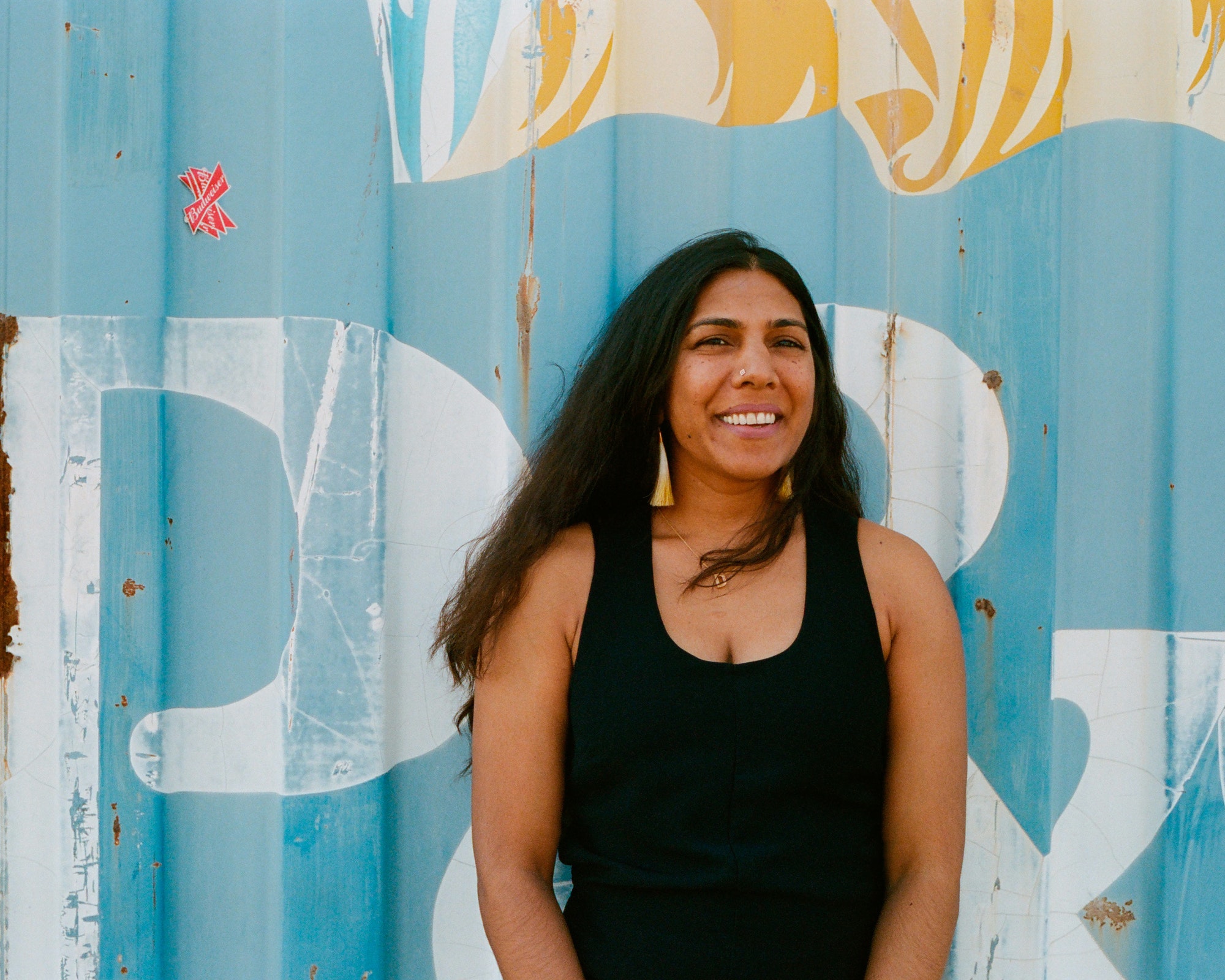
- Interview by Brandi Katherine Herrera May 1, 2018
- Photography by Ryan Essmaker
Deepa Subramaniam
- digital product director
- consultant
Deepa Subramaniam was born and raised at a cultural crossroads—in California’s Bay Area and in southern India. As a result, she’s learned how to successfully shape-shift between distinctly different worlds; a skill that has made her a better thinker, collaborator, and problem solver. From tiny, disruptive non-profits, to large, high-functioning corporations and startups, and even the Hillary for America campaign, the NY-based digital product director had seemingly done it all before making the move to working for herself. She spoke with us recently about what led to that decision, and how her broad range of experiences has only made her hungry for even bigger conversations and greater impact.
You grew up in the Bay Area, and stayed there to attend Berkeley. In what ways did your California upbringing influence your ideas about creativity, and also tech? I’m absolutely a product of my environment. There was a real duality in my family. My father is an engineer, and my mother is very artistic. She’s a nature lover, and has the greenest thumb of anyone I’ve ever met. So there’s this real right brain/left brain split in my family, and I grew up very aware of that dichotomy.
Our home was the kind of place where we had either the local news or PBS NewsHour’s MacNeil/Lehrer Report on the TV. And at the dinner table, we talked about politics, current events, and the state of the world, which was definitely my father’s influence. He read voraciously at every meal; there were always newspapers and magazines at the table, like Forbes, Time, the Wall Street Journal, and the Mercury News. The first magazine subscription I ever wanted was the Economist, because I remember my sister talking about how much she loved it.
How old were you? I was in high school. (laughing) My older sister is brilliant, and I followed in her footsteps in a lot of ways. She took a similar path as I eventually did, with a degree in computer science from Berkeley.
You mentioned the dichotomies in your family. It sounds like you and your sister were fairly influenced by your father’s path. There was this deep appreciation for knowledge in my family, which was my father’s influence. And then there were my mom’s influences, like a strong appreciation for music and spirituality. Because of her, I trained in classical Indian music and dance, which were really important to me, and that tempered the barrage of news and politics in the house. I also had a computer and an Atari, and played sports. I was running around doing all the things that an American kid does, in addition to being a very good Indian kid.
Every summer we went to southern India to visit family. We would spend time in big cities and little villages, and I got to see what it was like to grow up and live in India, which is very different from the Western world. My sister and I also speak the language fluently, and I think that shaped my worldview as well. In India, playtime meant running around in wide open spaces, stringing flowers together, and trying to get rides on the local temple elephant as it walked by. It was whimsical! At the same time, I saw extreme poverty at a very young age.
In India, all of my family lived in the same neighborhood, and in that part of town there was a small watering hole. I would watch all the kids line up in the morning and in the afternoon to fill a bucket with clean water, so they could take it back to their homes. In my grandparents’ home, you could just turn on the tap to get drinkable water. But right there on the same street there were families where that was a luxury, and it was the children’s job to do that before and after school. That really affected me. Later in life when I started working at charity:water, I thought a lot about that. I remember filling up the jugs with the other kids, because I thought, Well, if they’re doing it, I will, too! I didn’t realize those kids had to do that every single day, and that it wasn’t just some fun activity, but a necessary daily chore.
If you talk to anyone who grew up straddling different cultures, you’ll see similar kinds of dichotomies. I was Indian, and I was American. I was an athlete, and I was a dancer. I was socialized in an American way, but also in an Indian way. As a result of growing up like this, I learned how to feel comfortable bridging different worlds. As I got older, I realized what a boon that was for my own personal identity. In some ways, I don’t feel American or Indian. I feel like this special hybrid; an amalgamation of all my past experiences, and I’m grateful for that.

“I was Indian, and I was American. I was an athlete, and I was a dancer. I was socialized in an American way, but also in an Indian way. As a result of growing up like this, I learned how to feel comfortable bridging different worlds.”
I’ve also heard people describe that kind of duality as something very challenging to navigate, so it’s interesting to hear you also describe it as a gift. In what ways has that ability to shape-shift impacted your work today? I fully understand how for some people it can be a challenge. You have to live with two different identities, and it’s only through hard work, introspection, and communication with your peers, family, and friends that you can even try to consolidate that into a manageable identity.
Being a product of two cultures—that are in some ways complimentary, and in other ways very different—has only strengthened my ability to empathize with people who are different from me. It’s provided a way for me to more easily find common ground, and join a conversation that might otherwise feel foreign. You learn to adapt. And because of that, I have always been able to jump into new, and very different, experiences without as much fear as others might have. I only recognized later in life that this sort of fearlessness comes from the fact that three months out of the year, I was plucked out of Silicon Valley and plopped down into situations in India that are about as foreign as an American can imagine.
Because of this, I find that I can get bored easily, and I crave variety. I want to meet different people, and to learn more about their stories and backgrounds in order to better understand and empathize with them. I think that produces better creative output, and working relationships, because I’ve had to learn to listen and ask questions. It’s definitely made me a better product thinker and collaborator.
This has also allowed me to participate in exponentially bigger conversations. For example, with the Hillary for America campaign, we were building products for everyday Americans in order to raise money, mobilize voters, and get Hillary Clinton’s message out. And with charity:water, we were building a platform to connect and energize the whole world in order to solve the water crisis. None of this would be possible without intricately understanding people and their needs, motivations, and psychology.
It sounds like one of the threads that tied these very different environments together was your approach to the work. What were the major differences you experienced in working for such a broad range of organizations? Adobe is a large, high-functioning, multi-product business that has its own environment, culture, and ways of working. I jumped from that over to charity:water, which is a small, non-profit startup. There, I had to understand the water, sanitation, and health sectors, and help ideate on how technology could be used to solve the clean water crisis. Then I jumped over to a presidential campaign, which was bananas! (laughing) The campaign was like the ultimate unicorn startup, where we had to raise and spend nearly a billion dollars in about 20 months. The entire world is watching you, and at moments it felt a little like a reality show. It was the most reactive, high-spirited, action-packed two years of my entire life.
When I joined the Hillary for America tech team in July of 2015, we were around 15 people. The campaign headquarters was in Brooklyn, and at that time was maybe 100–150 people. Fast forward 19 months, and the headquarters was around 700 or 800 people, the national staff was 4,500, and we had hundreds of thousands of volunteers across the country working furiously to get Hillary Clinton elected as the first female president of the US. It was a crazy ride, and so different from where I’d previously been. Once the campaign was over, I joined Kickstarter, a growth startup and public benefit corporation.
Through all these experiences, I’ve learned so much. Not just about the tradecraft of building great products that touch millions of people, but also about how high-quality collaboration happens. It’s my belief that you don’t always need the perks, amenities, and deep pockets that many people who work in Silicon Valley are so lucky to have. A local pizza shared across really great designers, engineers, and product thinkers in a little room late at night is also a place where magic can happen.
Space was a luxury at the Hillary for America campaign, especially as we entered the home stretch of the election. We were basically living there 15 hours a day, seven days a week. We were all crammed in there, and the trash was constantly overflowing with pizza boxes. (laughing) Yet those were some of the most joyful experiences of my professional life. It was a crazy environment to work in, but when friends or colleagues outside the campaign would come to visit, they would always remark on the same thing: that they could feel this energy in the room. And it was true; we were buzzing with energy, which I think was a reflection of our focus, mission, commitment, and passion for the cause.
I know we lost, but I’m still very proud of what our campaign accomplished and what our tech team built—over 55 applications and services in about 19 months. That translates to a new product going to production every 10 or 11 days. Those products mobilized millions of people around the country to register to vote, and raised over 970 million dollars through three million grassroots donors. They helped get Hillary Clinton’s message out to the world. It was amazing to work with such smart people to produce such well-designed, scalable, and impactful products. It wasn’t in the same kind of environment you’d find at a cool rocketship startup. Regardless, it was some of the best work of my career.
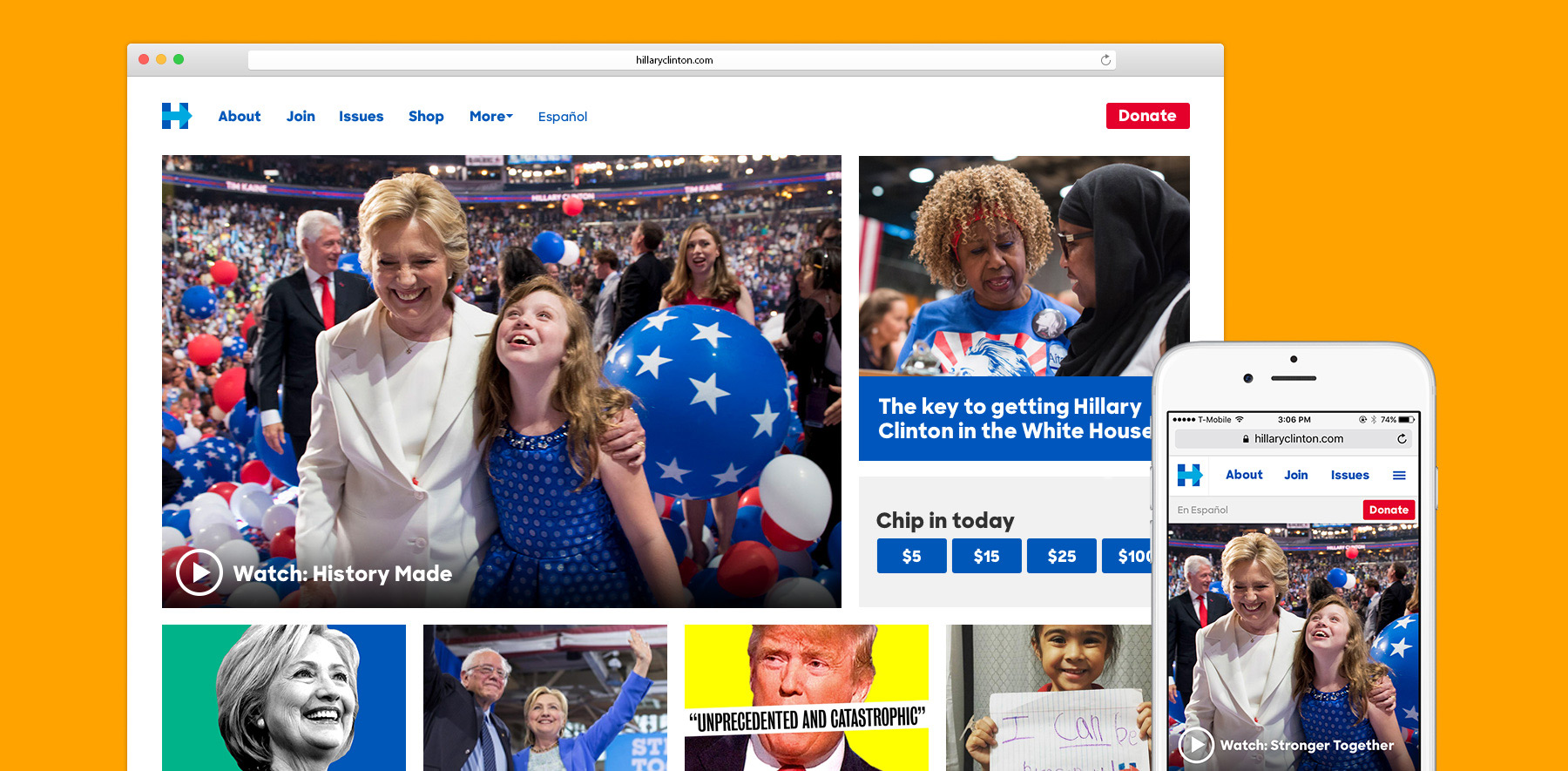
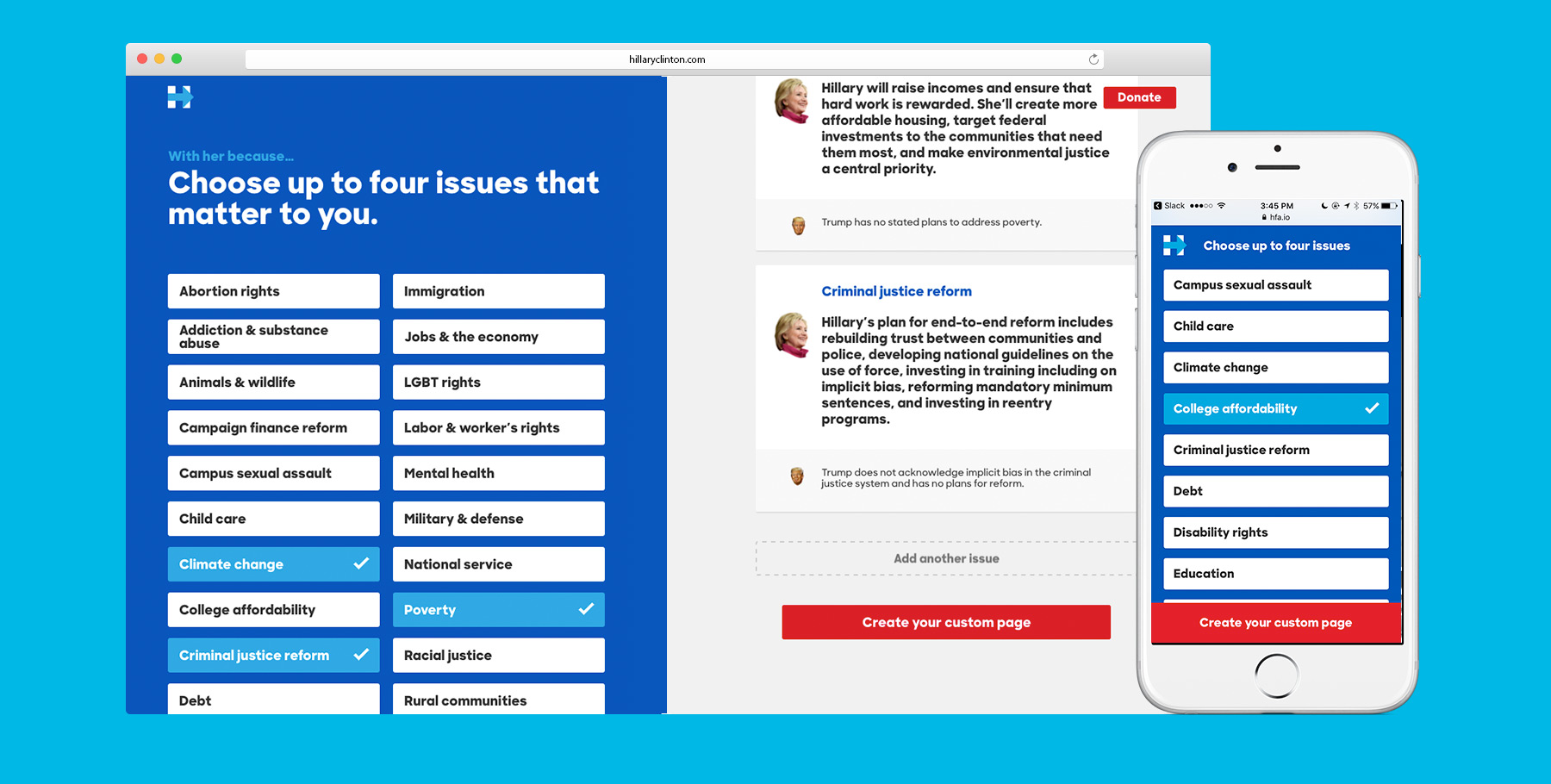
“The campaign was like the ultimate unicorn startup…The entire world is watching you, and at moments it felt a little like a reality show. It was the most reactive, high-spirited, action-packed two years of my entire life.”
You must have become pretty close with the team you led there. Can you tell me a bit more about them? It would be my honor. Everyone I worked with was truly the best in their craft. On the tech team, there were some of the best product managers, designers, full-stack engineers, researchers, and leaders one will ever get the privilege to work with. All of us were from a variety of backgrounds—large companies, small startups, non-profits, coding schools, you name it. These were people who had picked up their lives and moved across the country in a matter of days to join the mission.
Outside of the tech team, we had some of the best digital strategists and policy experts, as well as communications, legal, and finance professionals. We worked really hard together over long periods of time and it truly felt like a family. Hillary for America was also the most diverse and inclusive environment I’ve ever worked in. I had never worked for a female CTO until then. And my boss, our chief product officer, was also a woman.
I love hearing that. I hope I can repeat that experience, but I’m not going to hold my breath. Hillary Clinton put real thoughtfulness into her hiring; she encouraged the campaign staff and leadership to be representative of real America. And that meant having people from all different backgrounds and identities. It was a truly diverse campaign family. We ended up building better products on the tech team because we had so many people with different perspectives who were able to chime in on what we were building, and how to make it resonate as broadly as possible. The value of having a diverse and inclusive team isn’t just lip service—it really does impact the quality of your products and the journey in building those products.
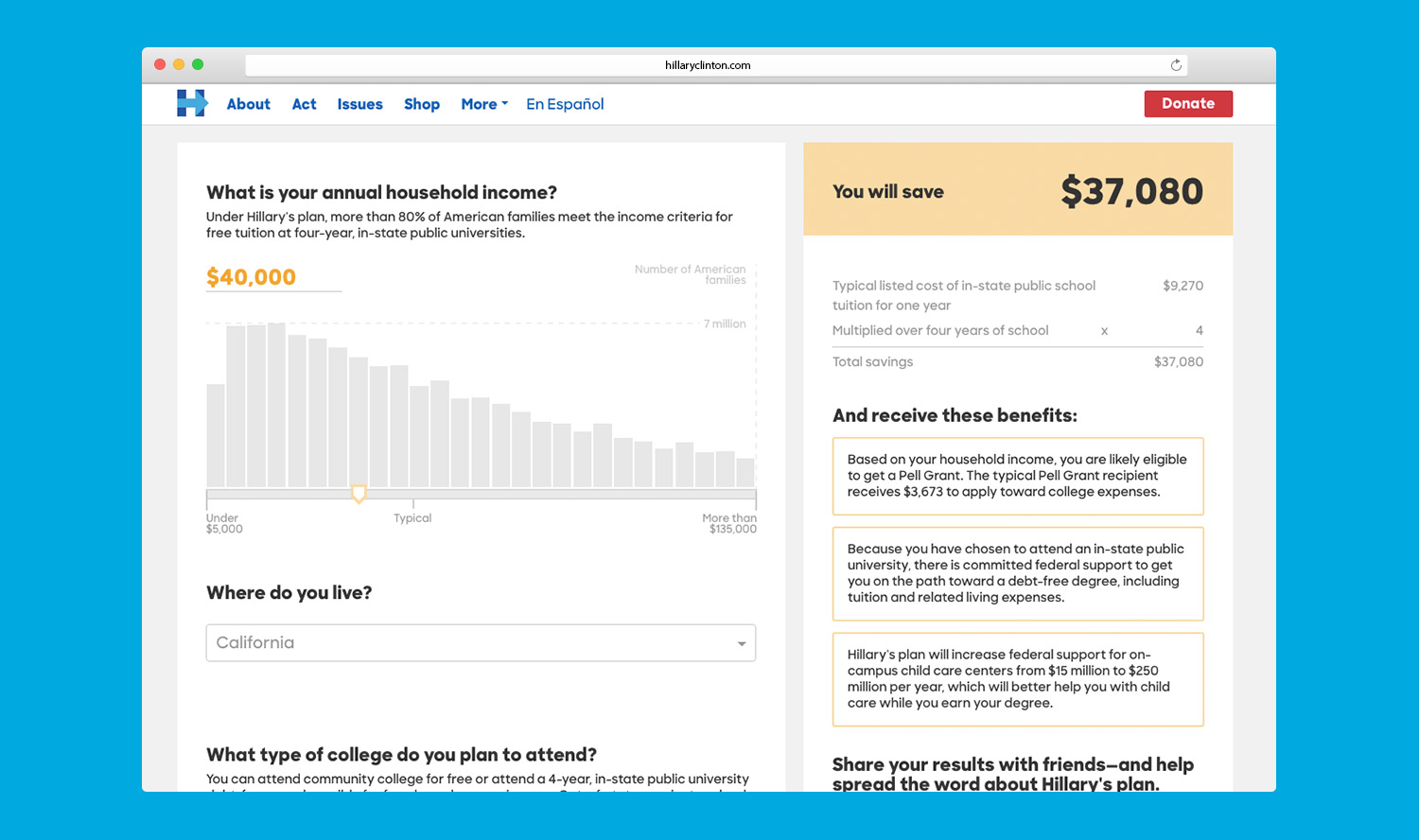
I had a hunch the campaign was pretty diverse, but I’m so glad you’ve confirmed that. What are one or two of the products you’re most proud of having developed with your team there? One of the products that I’m most proud of, which I know Hillary Clinton loved as well, was a calculator that helped visualize her college affordability plan. Remember, this was an election where talking about policy sadly wasn’t a priority. After the election, researchers cited that the number of media minutes actually dedicated to understanding the candidate’s policies was only a fraction of what it has been in the past.
The college calculator was one of the best examples of what high-quality, cross-team collaboration could produce in a short amount of time. On a campaign, the tech team is a supporting team. We partner with the digital, communications, policy, political, state, and finance teams to build technology that helps them meet their goals. The college calculator squad was a small team of five: two full-stack engineers, a designer, a copywriter and myself, joined by the policy lead who helped craft Hillary Clinton’s college affordability policy. Our job was to translate it into something understandable by everyday Americans. It had to be both educational and easy to use, not just for real Americans thinking about college planning, but also for press and political professionals.
In the private sector, projects like this would take months, but we had less than three weeks to build it. That taught me how important it is to bring together the right people, clearly define the problem, and help facilitate everyone to bring their best work to the project. Hillary Clinton gave it a shoutout on the campaign plane, saying it was one of her favorite things the tech team had built. It was such a privilege to hear that kind of feedback. And it wasn’t the exception, but the rule! Every member on the tech team has a story like that.
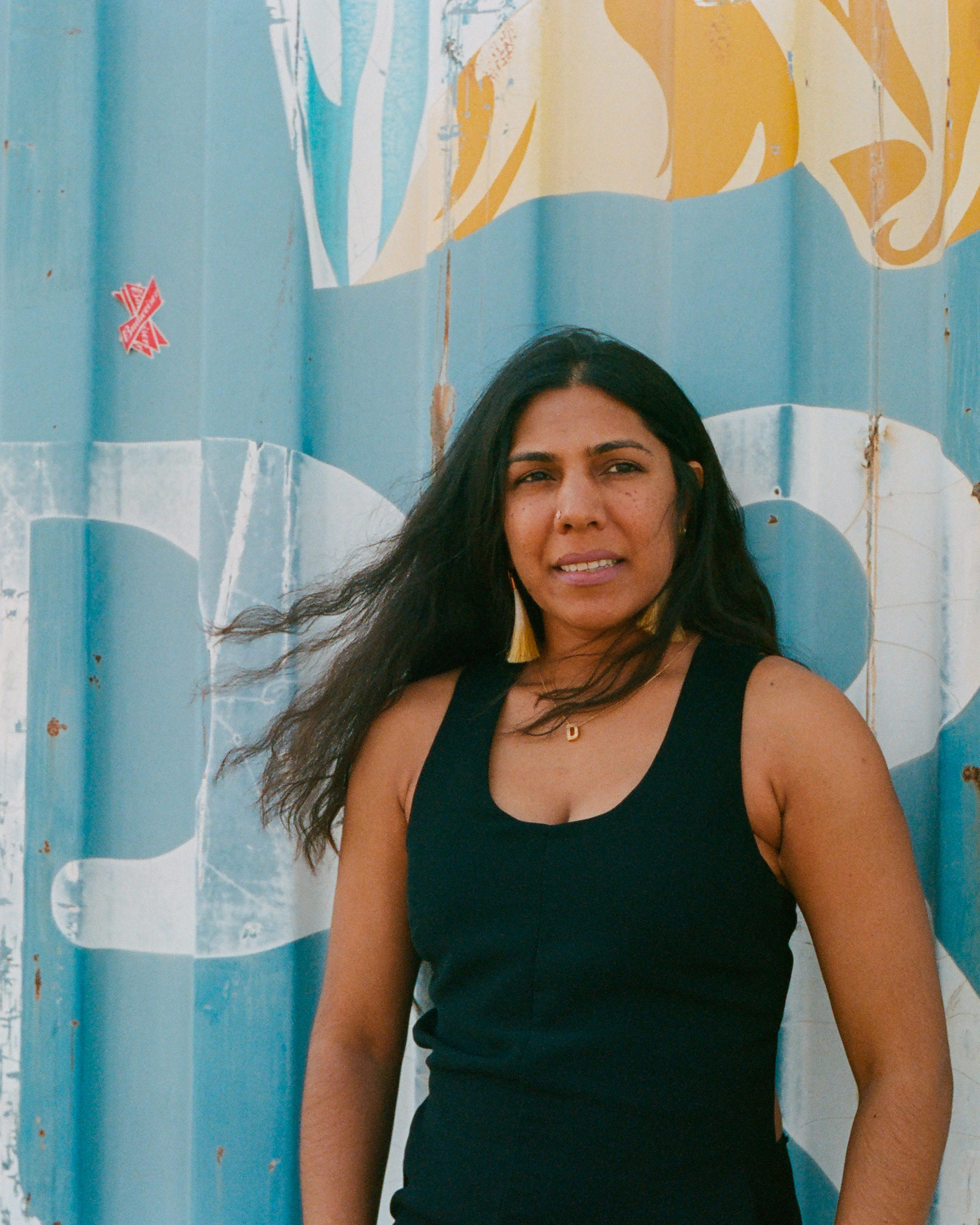
“The value of having a diverse and inclusive team isn’t just lip service—it really does impact the quality of your products and the journey in building those products.”
As you’re talking about creating these products in such a short timeframe, I’m thinking about the immediate reaction and impact you must have had the opportunity to experience as a result. The pace was incredible. I still work with the same sense of urgency as I did when I was on the campaign—I have lost the ability to slow down. One of the challenges of reentry into the real world is recognizing that not everyone works at that pace. That’s probably a good thing, because I don’t think that pace is sustainable. But as a result of my time on the campaign, I have realized that so much more can be done better, and faster, with fewer resources. Because of the need for quick turnarounds, we were able to try more things. Our experiments would get to statistical significance very quickly, because we had thousands of people coming to our site every day. At the same time, you had to learn not to get too attached to your ideas.
Now that I’m advising companies and startups with my company Wherewithall, it helps me understand that most things can be done fairly quickly and there’s actually a benefit to working like that. Working with a sense of urgency is a good thing.
I couldn’t agree more. I’ve worked in so many places where that’s not exactly the ethos; so it’s nice to hear. Totally. Working in that manner also means you’ll make mistakes, but that’s okay. As long as you’re receptive to that, and believe in your ability to course correct and recover from those mistakes, then why not work that way? I don’t really think there’s an alternative.
Agreed. This is going to be the ruffling feathers part of the interview. (laughing)
Naw, not at all. (laughing) You went on to spend time at Kickstarter, and are now working for yourself. Do you feel like all of your previous roles and experiences have somehow led up to where you’re at now, as a freelance consultant? Everything in the past has set me up for this moment to work on Wherewithall. After the campaign, and my time leading Product & Design at Kickstarter, I realized how much I had learned about leading healthy, high-functioning product design and engineering teams. As well as how passionate I was about the necessity of that. I wanted to share the insights and lessons I had gained from all these dynamic and varied experiences.
I’ve always been a student who had great mentors, and I’ve learned so much from my teams, and peers. I started to recognize that in some ways, I might be in a position to do some of that teaching myself, and to implement the kinds of practices that lead to healthy product teams. That really was the impetus.
Being my own boss and calling my own shots has been exciting, and meeting other people who are taking similar leaps has also been inspiring. One of the best things about being a consultant is getting to hear other people’s problems, and then connecting them to the people who can help solve those problems. Time is of the essence, you know? We’re not going to live forever. Some of the problems that technology can solve, need to be solved now, or we need to at least try. As our world changes, we need to fight every day for the world we want to live in.

“Am I happy about the statistics of women in tech? No. Am I happy about how women entering STEM fields is declining? No. It really upsets and frustrates me. Change like this is hard, but I’m heartened by the voices that are being heard and the stories that are being told.”
You’re certainly not at a loss for the kinds of projects that could provide greater meaning in your life. What is it about your work that brings you joy? The act of building great technology requires people to come together; to converse, share, and collaborate. And I love that! When an idea makes its way through all the different phases it must in order to get out the door, I love how many people would have touched and influenced that idea from concept to execution.
The projects I’m most proud of are the ones where that process was the most joyful. When not only the product is successful, but the journey in building it was fun for everyone. We spend more time with our co-workers than we do with our own friends and family—so we should be enjoying ourselves. I love being able to jump into organizations to help create that kind of environment.
Early in our conversation you mentioned the influence your family has had on your path, and how your sister has been a great role model to you. The gender gap in tech is still very real—did you happen to have any other women mentors? I’ve had many amazing mentors; male and female.
I recently saw Susan Wojcicki speak, and she talked about how men are especially enabled to pass on power, because they are often in the most senior leadership positions. In the tech world, we can begin to create an environment where men are passing on power to women and underrepresented groups—by being more intentional about how they plan their exit. But it’s not only incumbent on men to do that. It’s important for women to support and mentor one another as well, and to find ways to pass on power to each other.
Am I happy about the statistics of women in tech? No. Am I happy about how women entering STEM fields is declining? No. It really upsets and frustrates me. Change like this is hard, but I’m heartened by the voices that are being heard and the stories that are being told. 2017 was a pivotal year for that. Not only is that the kind of world I want to live in, but it also means there will be stronger, healthier companies, better products that represent more of the world, and happier journeys as a result. These are no-brainers—now it’s just about finding the sustainable pathways to take us to that better place.
I love the notion of women passing on power. What advice would you give a young woman who’s just starting out in engineering, who may aspire to a role in product management, that you wish someone would have once given you? If I could go back and tell my younger self anything, it would be to have more intentionally sought relationships with mentors. Seeking that out is important, even if it means going outside of your immediate community to find and set up that relationship. You need examples of people out in the world doing the work you want to be doing so you can see how it’s even possible.
That’s great advice. I just have one more question: at this moment in your career, do you feel satisfied with where you’re at; creatively or otherwise? I’m as satisfied as I think I’m capable of being, in that I feel energized by the work I’m doing, the conversations I’m having, and the things I’m learning. But that just turns me on to wanting to learn more, meet more inspiring people, and solve more problems that have even greater impact.
There’s so much that can be done, and this is a critical moment in our world, in our country, and even in my industry, and I want to have as much of an impact as I can. I’m excited about where I am now, and what my next trajectory will look like. And that makes me feel so happy to be able to say to you.

“If I could go back and tell my younger self anything, it would be to have more intentionally sought relationships with mentors. You need examples of people out in the world doing the work you want to be doing so you can see how it’s even possible.”